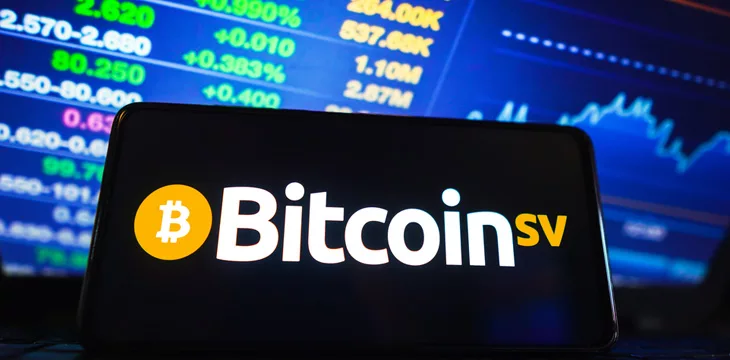|
Getting your Trinity Audio player ready...
|
In this article, Marquez Comelab explores the power of micropayments and the limitations of traditional payment methods that make streamable money seem unattainable.
Introduction
Let’s explore the often underestimated yet highly significant power of micropayments. With its ability to send tiny amounts of satoshis at short intervals, the BSV blockchain effectively transforms its tokens into streamable money. Until now, the prohibitive costs and technical limitations of existing payment methods have made the concept of streamable money seem unattainable. However, this technological advancement in BSV blockchain has the potential to greatly simplify, streamline, or even render obsolete the complex contracts, bureaucracy, and administrative systems and processes that currently burden our civilization.
The invention of modern coins over 2,600 years ago revolutionized how value was exchanged, laying the foundation for economic systems that endured for centuries and advancing various aspects of our existence, from philosophy to politics to art and science.
Today, with the launch of Bitcoin in 2009, a new digital commodity—satoshis—can now embody and store valuable data and information that can be sent anywhere in the world for negligible costs. Just as the exchange of metallic coins propelled humanity forward, we now face an exciting future with the BSV blockchain providing electrified commodities—satoshis—that can function as streamable money. This article discusses how BSV is streamable money and can usher in a new era of global and inclusive financial interactions, spurring significant economic growth, much like the impact of Lydian coins in the past.
The Evolution of money: From Lydia’s Coins to Greek Prosperity
In an article I wrote titled “How Innovations in Money Changed the World and How Bitcoin Will Do the Same,” we explored the origins of coins resembling our modern coins, which appeared to have originated from a civilization known as Lydia around 640 – 630 BC. With the introduction of coins, the cost of various goods and services, from loaves of bread to months of rent, began to be measured and exchanged using these new forms of money. This innovation significantly facilitated commerce, leading to the emergence of the first retail shops and markets in Lydia.
The advent of coin-based money allowed people to transcend the exchange of physical objects and start considering more abstract concepts, such as labor. Within a simplified monetary system based on coins, individuals could quantify the value of a day’s work, considering factors like skill and physical effort. Money became the standard for assessing the worth of one’s time, enabling individuals to offer and receive coins in exchange for various services, such as constructing a house, tending to someone else’s fields, or caring for another person’s animals.
Over time, the practice of coinage introduced by the Lydians was adopted by neighboring Greece, leading to their increased wealth and influence through coin-based commerce across the Mediterranean. Following Lydia’s invention, the Greek adoption of Lydian coins as money contributed to a significant economic expansion and a flourishing period that lasted for several centuries.
BSV: A modern commodity money for the digital age
The U.S. Dollar, the Euro, and other national currencies are fiat currencies that rely on government backing. In contrast, Lydian coins are commodity money, meaning they derive value from intrinsic worth and versatility. These coins, forged from precious metals, can be melted down and repurposed into valuable items such as tools or jewelry.
Bitcoin, specifically BSV, shares commonalities with commodity money. Its value emanates from its role as a digital medium, facilitating swift and efficient data transfers worldwide while the immutability of the blockchain safeguards and stores the data timestamped, ensuring tamper-proof records.
For instance, utilizing the 1Sat Ordinals protocol on the BSV blockchain, a single satoshi (with one Bitcoin comprising 100 million satoshis) can store contracts, ownership records, photographs, documents, and transactions, offering enduring data preservation. These satoshis, referred to as ordinals, are inscribed on the blockchain. And like any other satoshis, they can also be sent or transferred to anyone worldwide, taking advantage of the immutability, reliability, and integrity of the BSV blockchain.
Similar to how Lydians and ancient Greeks exchanged metal pieces with the knowledge of their utility, BSV circulates today with the understanding that each satoshi is a valuable commodity. In an increasingly data-centric economy, where trustworthiness, reliability, and accessibility of information are paramount, BSV serves as a useful and versatile medium of exchange reminiscent of traditional commodity currencies like lead, gold, or silver coins.
Today, the BSV blockchain stands as the sole operational blockchain that closely aligns with Bitcoin’s original vision. Since 2017, following the restoration of the Bitcoin protocol, the BSV blockchain has achieved remarkable milestones.
In addition to the ability to inscribe images, contracts, declarations, ownership records, or any file on the BSV blockchain and transfer it worldwide in minutes, the blockchain has the features necessary to enable micropayments and microtransactions, which is made possible by allowing people to send small amounts of satoshis for thousandths of a U.S. cent for almost free. Because of these, payments can be made in small increments and short intervals. Further, the BSV blockchain can settle transactions globally within a few minutes. This breakthrough has led to BSV tokens becoming the first usable commodity money that people can ‘stream’—like streaming fluid or electricity—allowing payments to meet the diverse needs of modern digital transactions.
Like water or electronic data, BSV is streamable
To explain this concept further, let’s consider that we pay our water bill monthly, quarterly, or yearly. This payment is for the service of being provided with fresh and clean water. The benefit of this service is being streamed to us, householders. But imagine if we can also start paying for the service per minute or even per second that we use water. Then, we also effectively’ stream money’ back to the service provider, as they ‘stream’ water back to us. Streamed payments may not be needed at home. Still, when staying at a hotel, holiday accommodation, rented office, or any other rented property, this capability has obvious implications worthy of further consideration:
- When the customer/client finds that the quality of the service is not what was promised, expected, or delivered, then customers/clients can immediately stop the payments until the issue is resolved with the service provider. This prevents further losses.
- When the service provider finds that the client is unwilling or unable to make payments, they can stop providing their service as soon as the payments have stopped. This stops further losses by investing time and resources to service the customer/client only after the issue is resolved.
We understand that, in concept, the above is the ideal scenario. However, because transaction costs of existing payment methods built on fiat currencies make micropayments and microtransactions impossible, we write up lengthy contracts and agreements to prevent or provide remedies for damages for both the service provider and the customer/client when things do not go as hoped.
We can simplify much of the bureaucracy and administrative burden in all aspects of modern life if we can structure our contracts, agreements, and processes using ‘streamable payments.’ Here are some examples to consider:
- Freelance and consulting services: Instead of fixed-rate contracts, freelancers or consultants could be paid every hour or as they complete each task. The global freelance economy has been increasing in recent years. According to a report by Financesonline.com, there are currently 1.1 billion freelancers worldwide1. The global gig economy is projected to reach $455 billion this year2. In an increasingly globalizing labor market, using ‘streamable’ commodity money makes the most sense when dealing with people remotely from other countries.
- Subscription services: Services like gym memberships or software subscriptions could transition to a pay-per-use model. Users would pay for the time they spend using the service rather than a flat monthly fee, ensuring they only pay for what they use. It allows us to have more mobile and flexible lifestyles. We do not have to keep going to the same gym or swimming pool all year round. We have the freedom to try different experiences that other venues offer. We can also go to any gym or swimming pool wherever we may be on weekends or while traveling.
- Utility services: Similar to our example of water services, utilities like electricity, gas, and Internet could be billed in real-time based on actual consumption. This would encourage more conscious usage and allow customers to control their expenses directly. Micropayments also enable users of such services to pay no more than what they use.
- Rental services: Car rentals, equipment hire, or coworking space usage could be charged per minute or hour. This approach would make short-term rentals more accessible and affordable.
- Educational services and online courses: Paying per class attended or module completed in online education platforms would allow students to manage their learning expenses better and pay only for the content they need.
- Legal, accounting, and other professional services: Lawyers, Accountants, and other professionals could charge clients in real-time for advice given, rather than traditional hourly billing, which often includes minimum billing intervals.
- Creative and entertainment industries: Artists, musicians, and performers could be paid per view or listen of their work, offering a more direct and fair compensation model. In a collaborative work like a film or a music album, everyone involved can receive their share of the revenue from people paying to watch the movie or the album.
- Agricultural and seasonal work: In sectors with variable workloads like agriculture or hospitality, workers could be paid instantly based on the actual hours or tasks completed, which would be beneficial during peak seasons, where flexibility is sought both by workers and employers.
- Wages and salaries streamed to employees and their taxes, ‘streamed’ to the government: Employees can be paid every hour or even every day they work. The tax payments for their income are automatically sent to the tax office to reduce and simplify tax administration reporting and processing burdens.
In all these scenarios, ‘streamable payments’ can reduce administrative burdens, enhance fairness, and provide more granular control over costs and earnings. This approach aligns economic incentives more closely with actual usage or work done, potentially transforming how services are consumed and paid for.
Advantages of ‘streamable’ payments for consumers and providers
The adoption of ‘streamable’ payments in transactions for goods and services offers significant benefits for both consumers and providers:
Benefits for consumers
- Pay for actual usage: Consumers pay precisely for the amount of service or goods they use or consume, ensuring fair pricing and preventing overcharges.
- Greater control over spending: Real-time payments allow consumers to monitor and control their spending more effectively, leading to better financial management.
- Immediate service adjustment: If the quality of a service drops or isn’t as expected, consumers can immediately halt payments, giving them leverage to demand better service.
- Increased transparency: Streamable payments provide a clear, continuous record of what consumers pay for, enhancing transaction transparency.
- Convenience and flexibility: Consumers enjoy the convenience of seamless, automated payments, eliminating the need for manual payment processes.
Benefits for service providers
- Steady cash flow: Providers receive payments continuously as they deliver their service, improving cash flow and reducing the lag time between service delivery and compensation.
- Reduced payment defaults: The immediate nature of streamable payments lessens the risk of customer non-payment or delayed payments. Considering that this is one of the most common reasons entrepreneurs and small businesses fail, this would increase their chances of surviving their early years.
- Enhanced customer satisfaction: Providers can offer more flexible and user-friendly payment options, potentially increasing customer satisfaction and loyalty.
- Real-time revenue monitoring: Providers can monitor their earnings in real-time, aiding in better financial planning and resource allocation.
- Lower administrative costs: Automating payment processes reduces the administrative burden of billing and collections.
Shared benefits
- Increased trust: In an increasingly globalizing world where people do business with each other, ‘streamable’ payments for ‘streamable’ services (work that can be delivered remotely) allow them to work together while establishing mutual trust.
- Adaptability to changing needs: Both parties can adjust more swiftly to changing needs or conditions, thanks to the fluid nature of streamable payments.
- Enhanced market opportunities: Providers can tap into new customer segments who prefer or require more flexible payment models, while consumers can access a broader range of services.
‘Streamable’ payments foster a more equitable, transparent, and efficient transaction ecosystem, beneficial to both consumers and service providers. This system aligns closely with modern-day expectations of flexibility, control, and fairness in economic exchanges.
Conclusion: The fluidity of money—From Lydian Coins to Bitcoin’s streamable revolution
Two millennia ago, the Lydians accomplished something remarkable: they transformed the abstract concept of work and value into a tangible form—metallic coins. This innovation was revolutionary because, for the first time in history, the worth of labor and goods could be easily represented in physical money that could be stored and transferred to another owner. Coins brought unprecedented simplicity and efficiency to trade, fueling centuries of economic prosperity and propelling advancements in various human endeavors. However, as groundbreaking as this was, coins were discrete and static units of value.
Fast forward to the present, and we witness an evolution of this concept through Bitcoin. Thousands of years after the Lydians solidified value into metal, Bitcoin has achieved a breakthrough: the liquefaction of money. Bitcoin’s implementation in BSV has transformed money into a fluid, dynamic entity. With the capability to enable payments in minuscule increments and at short intervals, Bitcoin has effectively made money ‘streamable’ via the Internet. This streamable commodity money transcends the limitations of metallic coins, offering unparalleled flexibility and efficiency in financial transactions.
In this digital age, Bitcoin’s innovation lies in its ability to break down financial transactions into their smallest possible units, akin to streaming water from a tap. This ‘streamability’ is more than a technological marvel; it represents a fundamental shift in how we perceive and utilize money. Just as the Lydian coins opened new avenues for economic interactions, Bitcoin’s fluid money is paving the way for a new era of economic activity—one that is more inclusive, efficient, and adaptable to the diverse needs of a global economy.
Just as the Lydians’ introduction of coins triggered an era of economic flourishing, Bitcoin, as streamable money, stands poised to usher in a new phase of economic growth and advancement, reshape economies, and catalyze prosperity and progress for generations to come.
NOTES:
[1] “405 Freelance Statistics for 2023: Market Size, Profile Data & Salary Rates“, Financesonline.com, https://financesonline.com/freelance-statistics/, last accessed 15 Dec 2023.
[2] “Global Freelance Market Statistics & Trends (2023)”, Freedom2work.com, https://freedom2work.com/blog/global-freelance-market-statistics-trends-2023-, last accessed 15 Dec 2023.
Watch: Digital currency regulation and the role of BSV blockchain

 01-05-2026
01-05-2026 




